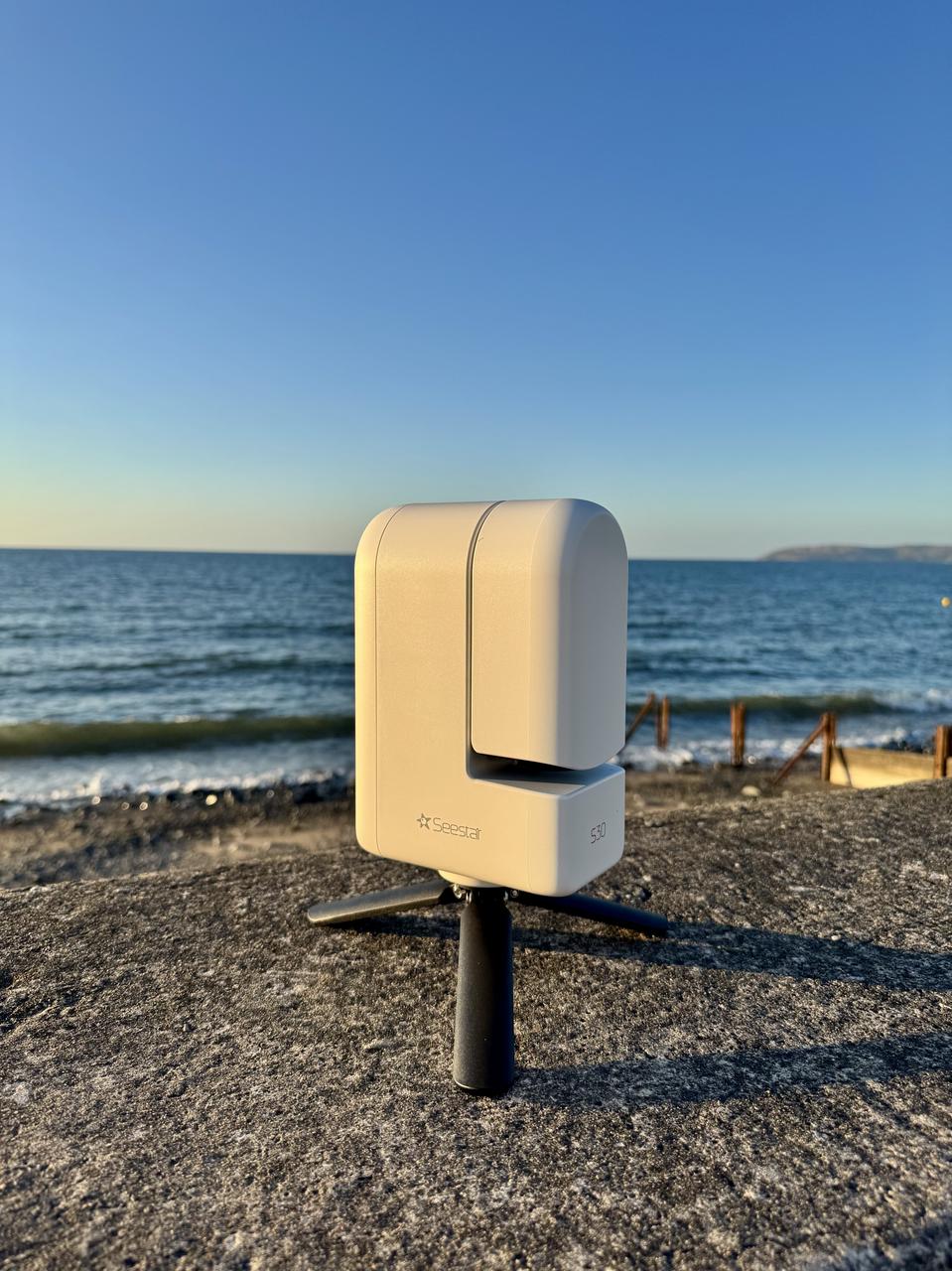By Zun, astrophysics PhD student
As a first year PhD student at TPPC, King’s College London, and a passionate skywatcher, Zun is no stranger to big telescopes and deep-sky targets. But on a calm May night in Llanfairfechan Bay, Wales, he wanted to answer a different kind of question — one that friends often ask when seeing a telescope:
"How far can it really see?"

S30 at Llanfairfechan Bay in Wales, UK
Armed not with a large observatory rig, but a Seestar S30 — a compact smart telescope costing only a few hundred dollars — Zun set out to push the limits.
His target: Quasar APM 08279+5255, a cosmic beacon so luminous it outshines entire galaxies. Boosted by gravitational lensing and clocking in at magnitude 15.2, this quasar’s light began its journey just 1.6 billion years after the Big Bang, over 12.1 billion light-years away. Its redshift? A staggering z = 3.911.
Deep exposure of the target area
With only 3.5 hours of darkness that night, Zun captured a 2.5-hour exposure in alt-azimuth mode under Bortle 4 skies (SQM 21.01). Despite field rotation, the image remained sharp — a testament to the S30’s design. More remarkably, this tiny CMOS sensor successfully recorded a signal from the distant quasar, the very light that had traveled across the vastness of space for over 12 billion years.

Original image from S30 with 2.5-hour exposure

Mentioned faint galaxies and stars in this S30 image
As Zun reflected:
“It’s deeply romantic to think these photons crossed the expanding universe just to land on this little smart telescope’s sensor. They passed galaxies, interstellar dust, even time itself — and finally arrived, here, with me.”
Imaging of the quasar by the Chandra X-Ray Telescope
Zun also wanted to test how faint objects the S30 could detect based on this image, so he used an 8-inch RC telescope I host remotely in Sumdo, Qinghai, to take a 2-hour exposure for comparison.
Zun's 2-hour exposure image with the 8-inch RC in Sumdo, Qinghai, China
Around this quasar, Zun unexpectedly found two galaxy light points in this S30 image named 2MASX J08313901+5242055 and 2MASX J08313043+5245026. Here he considered the visible magnitude values obtained from SIMBAD. For the larger 2MASX J08313901+5242055, the visible red light magnitude reaches about 15.814, while the smaller 2MASX J08313043+5245026 has a magnitude of about 16.742, both fainter than the quasar.
What about the stars? Zun selected the faintest star spot in the image, distinguishable from the background noise, named 2MASS J08320595+5244560, which has a visible red magnitude of about 17.832. Therefore, it is truly astonishing that a hundred-dollar telescope can observe a target of magnitude 17.8 in an alt-azimuth mode under level 4 light pollution after a 2.5-hour exposure!
In Zun’s hands, the Seestar S30 wasn’t just an accessible tool — it was a time machine. A telescope that brought the ancient universe closer to all of us.







